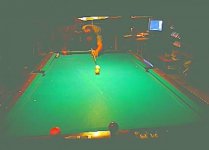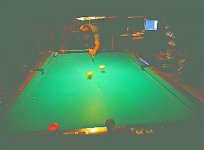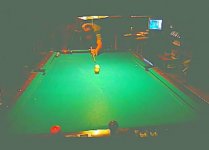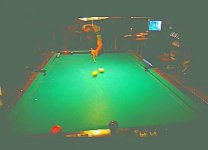Maybe it's not ghostball after all, but Duckie's lack of understanding speed control, that has kept from progressing past a low level player.
Musta hit a nerve......I always know when I do cause the personal attacks start...
So I'll just follow suit, you don't have clue one about what a pool stroke is. Those that keep using the term hit are also clueless about what stroke is. You don't hit the cb you stroke through it and there is a difference.
With a pool stroke, there is no soft meduim or hard , there is only the stroke need to put the cue tip pass where the cb was. There is no hit. Now, your stroke maybe so bad that you do hit the cb, but that's you and are problem.
Oh and since you have played me(not), you are so right about my level of play, I mean you just whooped my ass didn't you...
Last edited:




